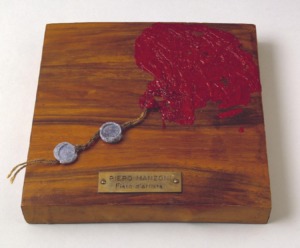
As explained in Phaidon’s The Art Museum, the world’s most comprehensive exhibition of fine art to be collected and presented in book format (each page is its own gallery room!), Conceptual Art “is not meant to be looked at aesthetically, but to be thought about intellectually.” In the following excerpt, we present 9 distinct approaches to this mind-boggling movement to see how different artists force our chin into our hands, and have us either scratching our heads, exclaiming “eureka!” or (most probably) pretending to get it in like, a really profound way.
.Following the precedent set by Marcel Duchamp, Conceptual artists “dematerialize” art in order to emphasize the importance of the ideas and concepts behind it. They are not interested in craft and form, but in the definition of art in general. The importance of Duchamp cannot be underestimated, particularly for young American artists who were looking for an alternative to the dominance of New York’s Abstract Expressionism in the years following the Second World War. Duchamp’s ready-mades—found objects that he exhibited as art—defied all traditional notions of art: they were not beautiful, they did not express anything personal about the artist, they were not original or unique objects, they had not been crafted by the artist. These objects became art simply because Duchamp chose to call them art, and he had the authority to do so because the art world considered him an artist. For Conceptual artists, Duchamp proved that art is not defined by the qualities of particular objects, but by the discourse surrounding them as works of art—discourse generated by artists, critics, and art historians, and by museums, galleries, and art publications.
